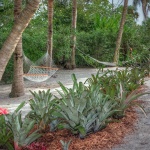Furniture is not what it used to be, straightforward utilitarian items, now it is a tasteful show of stunning attributes. In any case, one thing remains the same. Wood is still the most loved material. However, there is a special kind of wood in the sense that it has certain unique property that’s best for making furniture; and this is the Palmwood. It has a one of a kind grain, stable shape, Formaldehyde free, termite and water safe and that’s just the beginning. Palmwood even gives you an option to choose between overwhelmingly thick wood up to light wood, something you cannot do with other traditional timber. This is used for tables, chairs, cupboards and nightstands mirror frames and more.
It gives you greater adaptability in addition that it offers nature a major reprieve from all that deforestation. Palmwood is plantation timber, reaped from old trunks amid replanting, making it eco-friendly. Palmwood is basically a superior wood for a new world.
The Sabal Palm is the most common palm found in Florida and is even used as a symbol of the state. The Sabal has a cabbage-like terminal bud that has historically been eaten as hearts of palm. The bristles on the sheaths of young leaves have their own usefulness as they have been made into scrubbing brushes. Its sturdy trunks have been used as wharf piles in the early days of the state. But it was On June 28, 1776 when this palm tree made its mark on the state’s history. Charleston patriots under William Moultrie made a fort of palmetto trunks and from it defended successfully against the British in the Revolutionary War.
People in their homes or offices usually use little palm trees to decorate the space. However, hotels, resorts, restaurants and other establishments take it to a whole new level. These places sometimes transplant fully-grown palm trees to their property in order to beautify it. Such is the attractiveness of the palm trees that big businesses go out of their way and hire people and huge trucks just to take a 10 foot tall lumber from point A to point B. However, there are a few things one should consider before doing this.
Seeing how palm attaches develop and react to being cut will enable you to abstain from harming them and estimate the palms survival rate. Palm trees don’t have woody roots like broadleaf trees. They have a considerable measure of little roots, firmly pressed together, developing from the base of the storage compartment, like grass roots. Not at all like broadleaf trees, palm establishes don’t increment in distance across and continuing as before estimate as they initially risen up out of the base of the palm.
Research demonstrated that distinctive palm species react contrastingly to root cutting. Underlying foundations of a few palms like Sabal palmetto will bite the dust back subsequent to being cut and will be supplanted by the new roots. Along these lines, it truly doesn’t make a difference how near the palm base you cut them. In a few palms like coconut palm, half of the cut roots will survival regardless of how close you cut it. It will deliver not very many new roots in the wake of transplanting.
So, whether as functional and stylish furniture, a source of nourishment, as giant decorations for your upscale establishment or even to ward of an imperial army to win a revolution, the palm trees usefulness never ceases.










